Due to its location between Europe and Asia, Georgia has experienced many changes in its history, which we want to trace on a trek along the border with the Russian Federation. The starting point of our 8-day trekking tour is 190 kilometers from Tbilisiinternationally, the Georgian
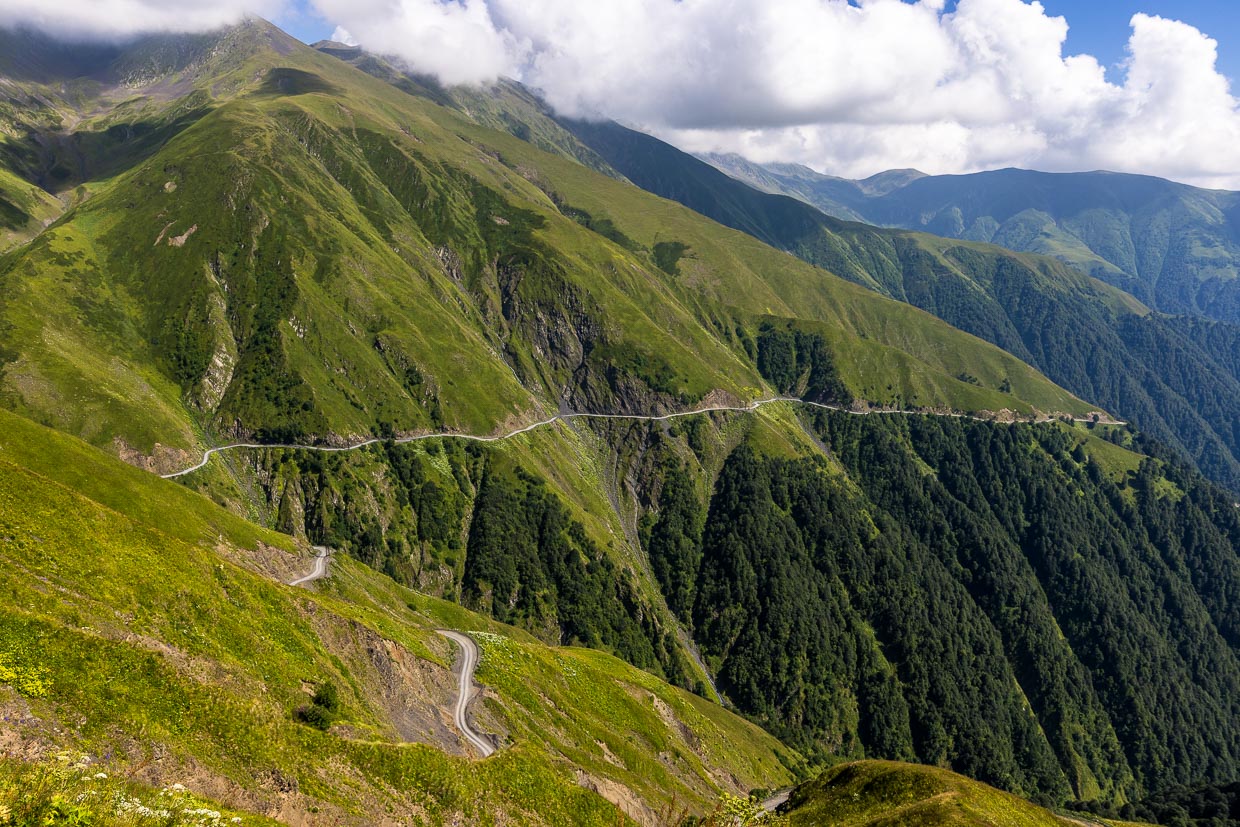
Our journey leads us through the oldest wine growing region
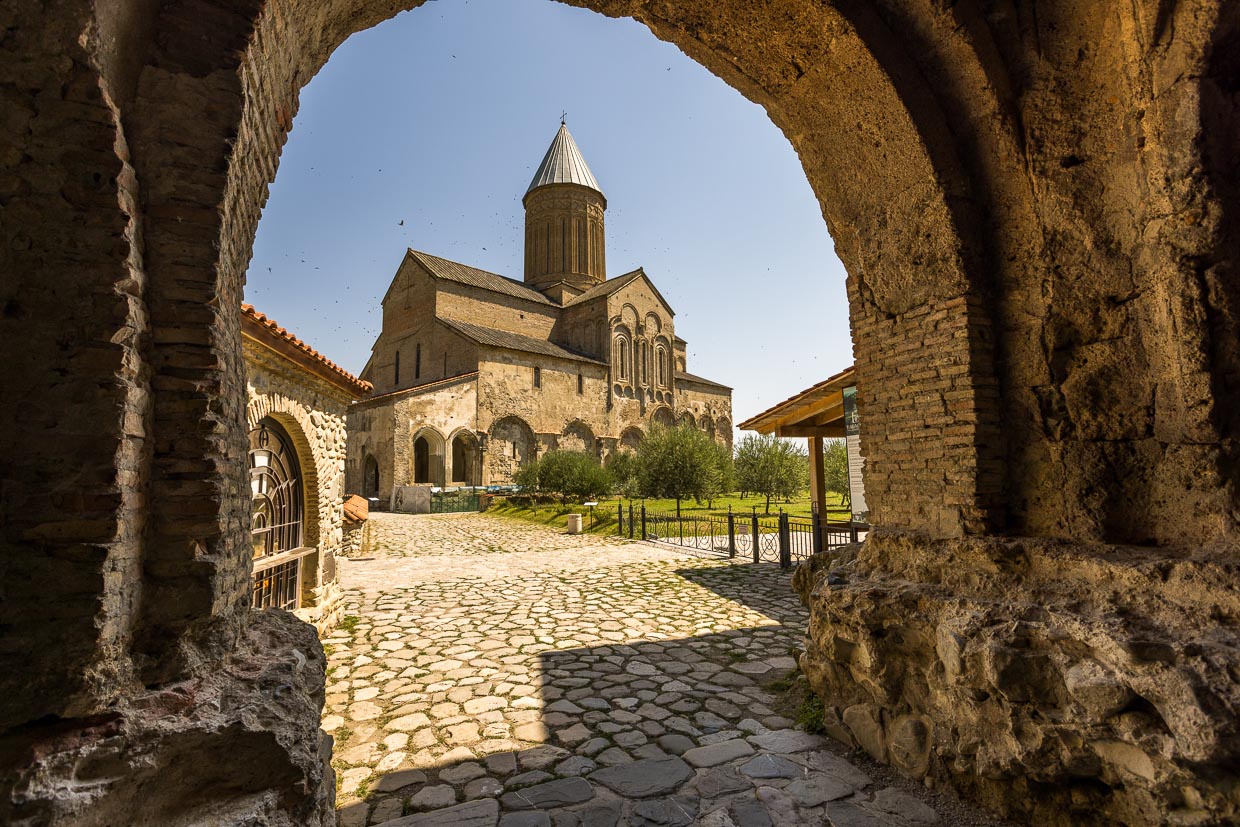
After eight hours of driving, we reach Omalo at an altitude of 1,880 meters. This small village is the administrative center of Tusheti. Before the upcoming hiking stages with overnight stays in tents, we will stay once again in a simple hotel. During a stopover in Telavi, the capital of the Georgian province of Kakheti, we bought food for the ten stages of the trek.
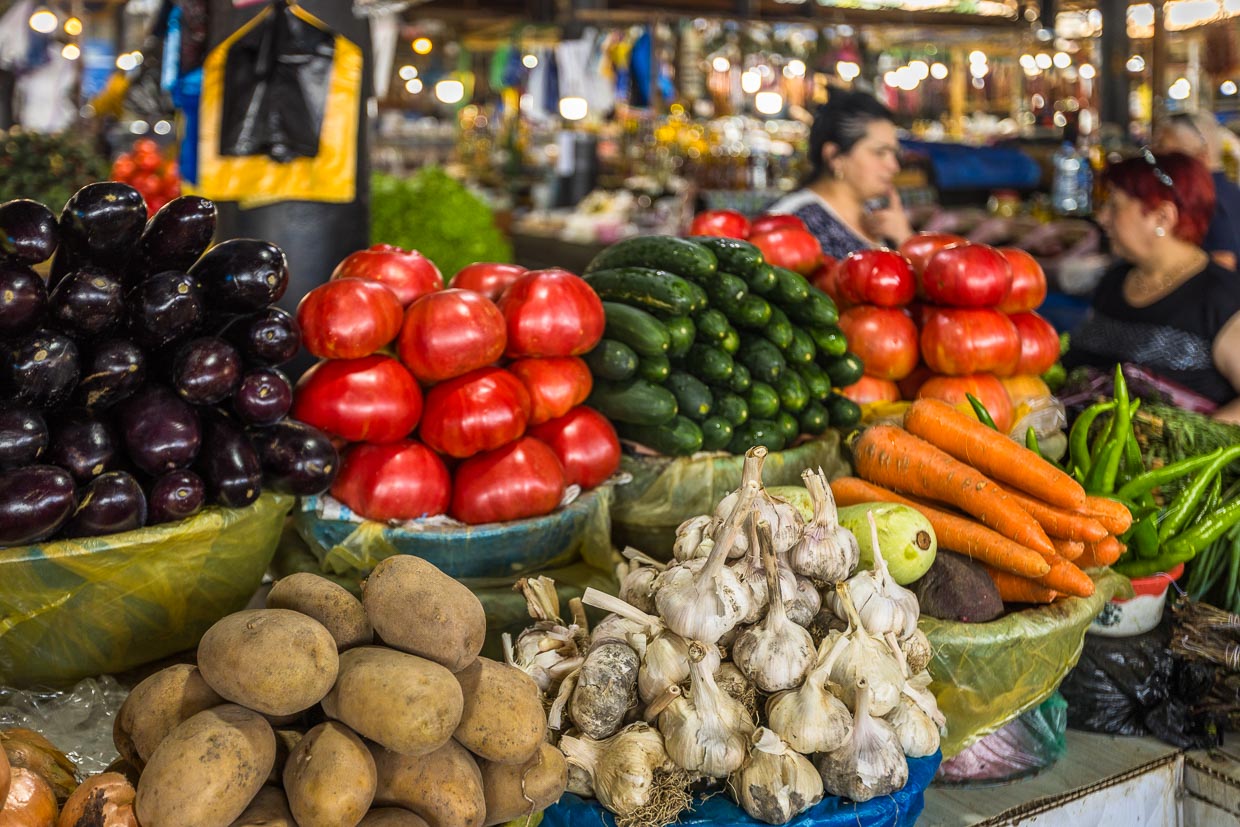
We have left the heat of Tbilisi behind in the mountains, but throughout the former Soviet republic of Georgia, the effects of Russia’s war of aggression against Ukraine are unmistakable. I strike up a conversation with Anna and Vitali, who are also planning to set out on a hike the next day. The Russian couple has lived in Georgia for almost two years. With a sentimental look to the East, they wonder when the political conditions will allow them to return to their homeland.
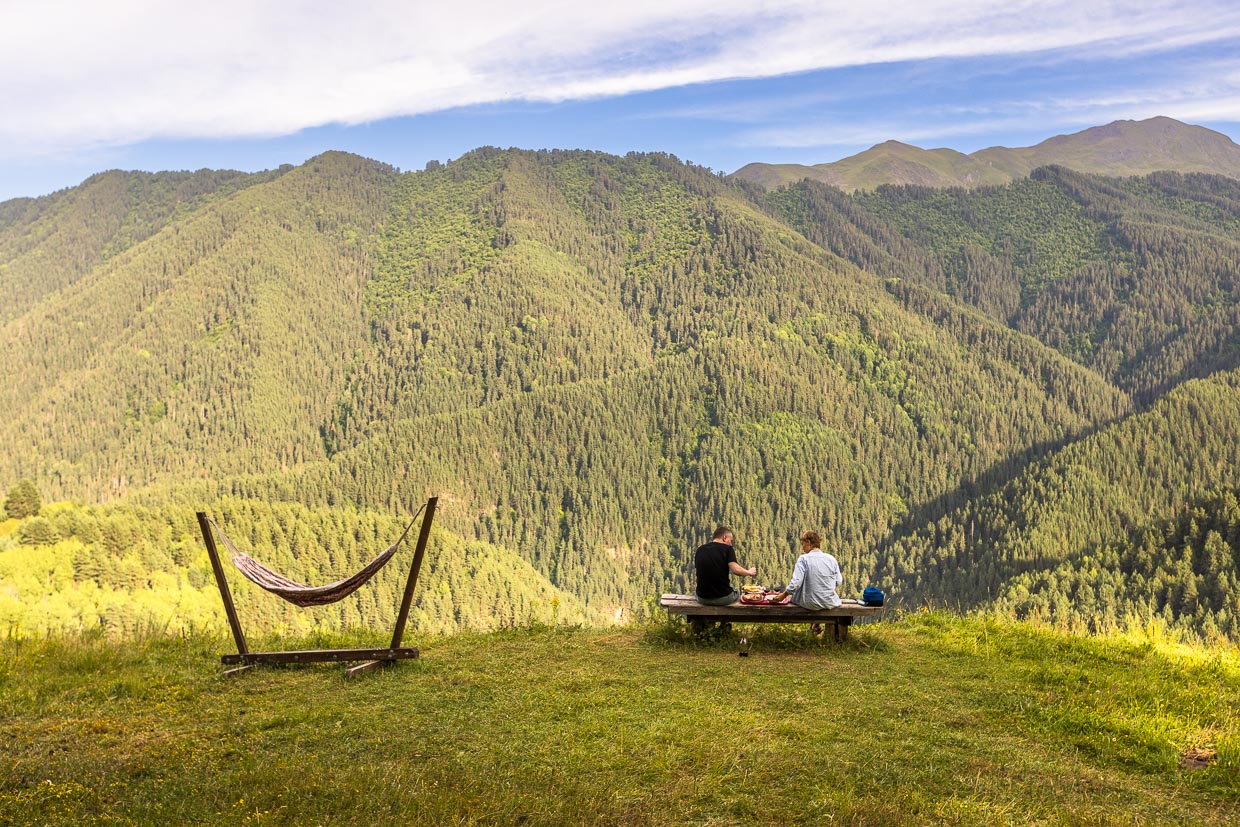
More outdoor is not possible
Our hike begins in one of the last villages in Tusheti that is inhabited year-round. Only in the three summer months from July to September the semi-nomadic Tuschen live here. During the rest of the year, the families live in the lower-lying Alvani Valley, which was given to them in the 16th century by King Theimuraz of Kakheti in gratitude for their support in the fight against the Persian invaders.
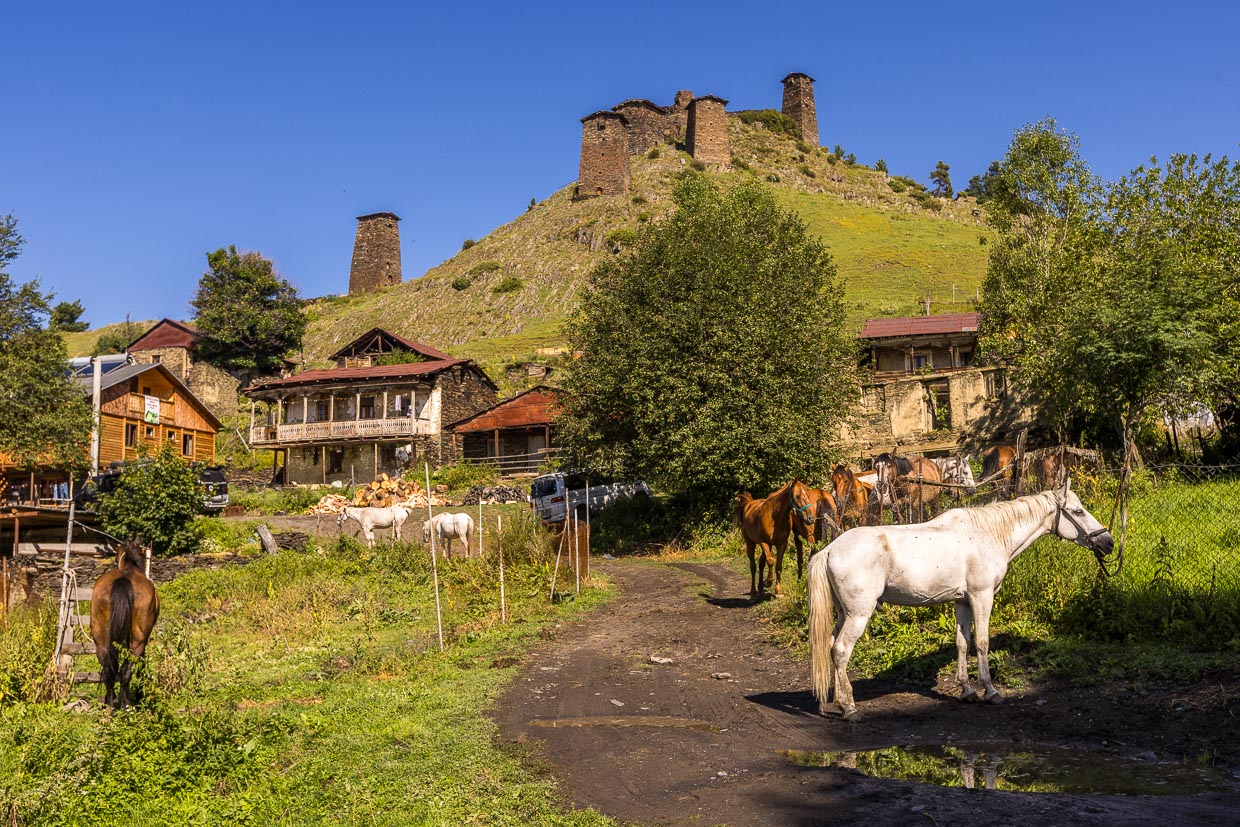
With light luggage we enjoy the nature and suspect that the route ahead of us was the scene of hostile conflicts for centuries. Almost 120 kilometers lie ahead of us, during which we have to overcome more than 5,000 meters of altitude. We are moving along the southern side of the mountain ridge that separates Georgia from Chechnya, often only a few hundred meters from the border.
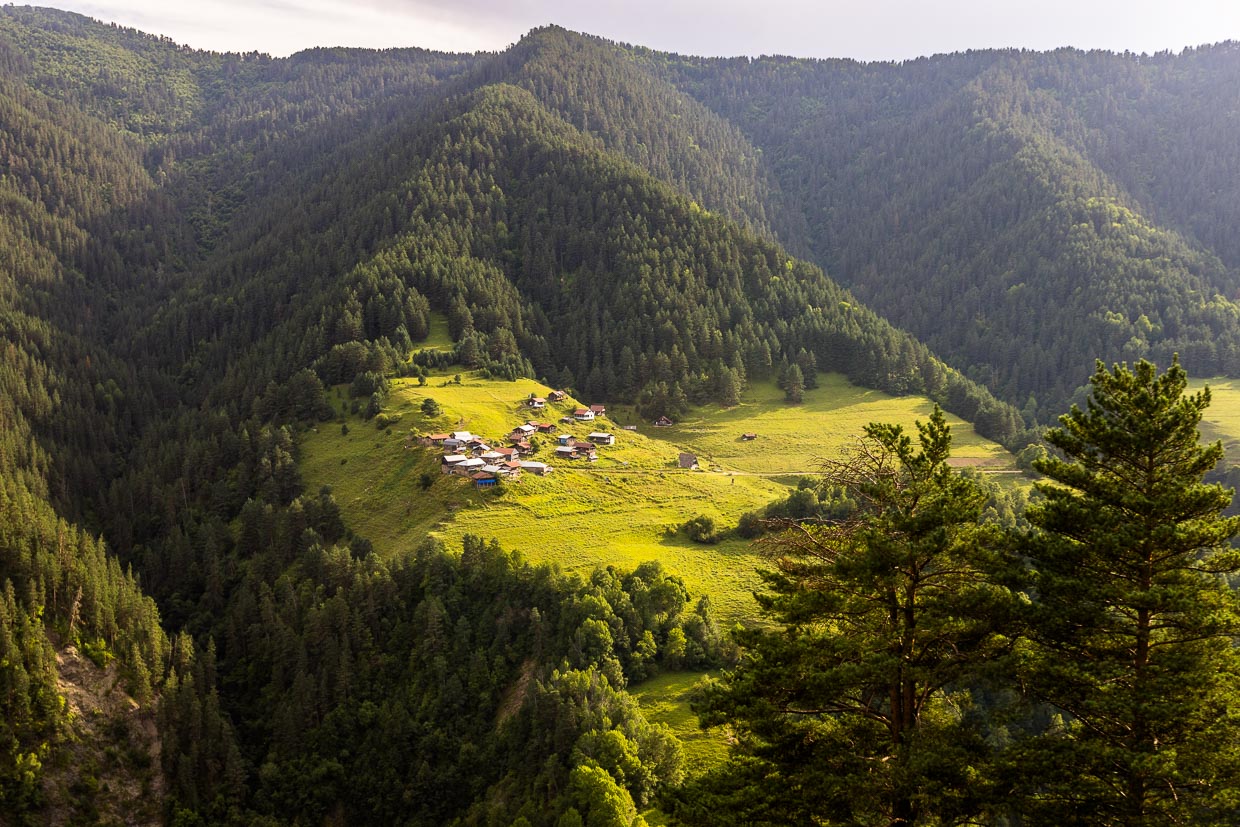
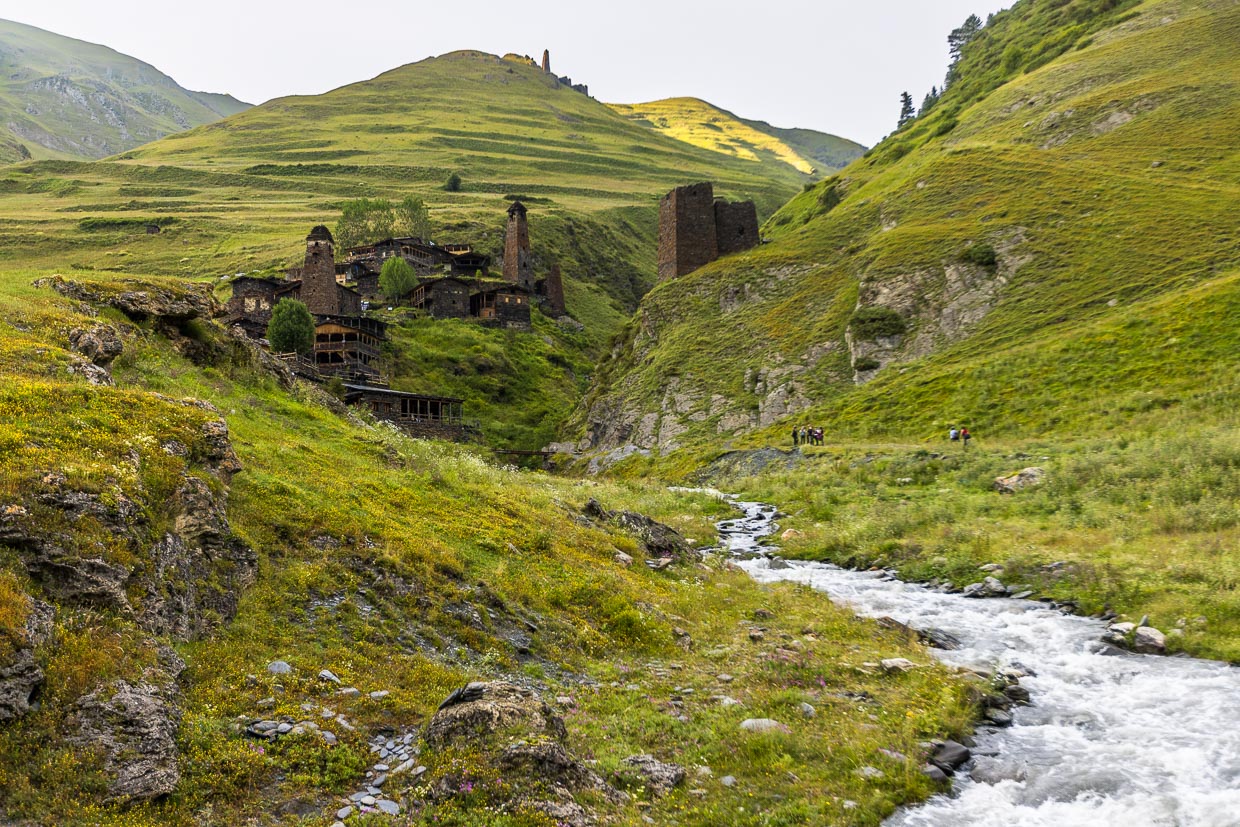
Border experiences
The border with Chechnya runs over rugged mountain ridges and has not been further secured on the Georgian side to this day. For the corridor, which is particularly close to the border, all persons need a letter of permission, which is issued at the border police posts and checked on the way. Tourists must have their passports with them for this purpose.
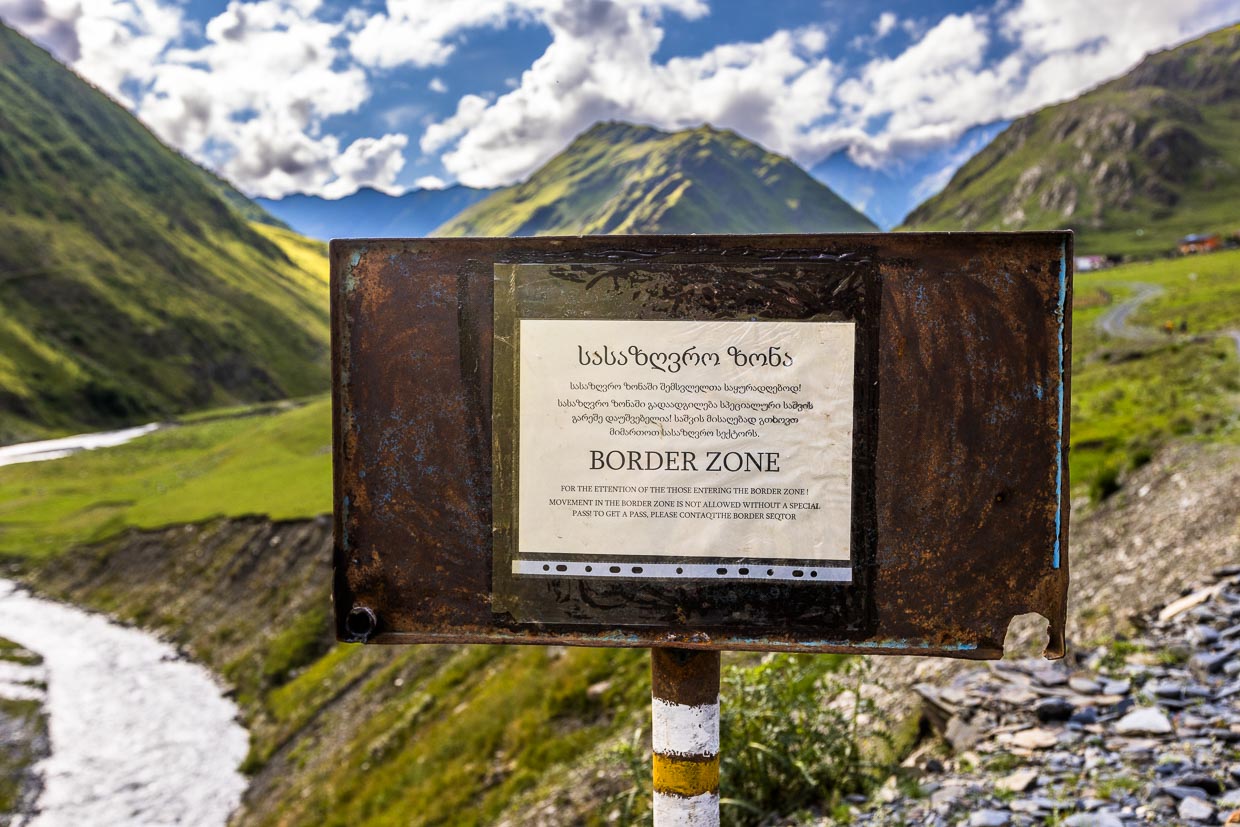
Since time immemorial, the borders between Tusheti, Chechnya and Dagestan have been a challenge. The Tusks were threatened primarily by human abduction. The row of old fortified towers, which stand within sight of each other and used to be constantly manned, cannot be overlooked. This meant that news of enemy attacks could be passed on quickly and the remote settlements could at least be defended together. As a deterrent, defeated enemies were buried in highly visible graves along the border. Since the Tusks believed in reincarnation, the right arms of killed enemies were chopped off as a precaution, and these decorated many Tusk house walls as trophies.
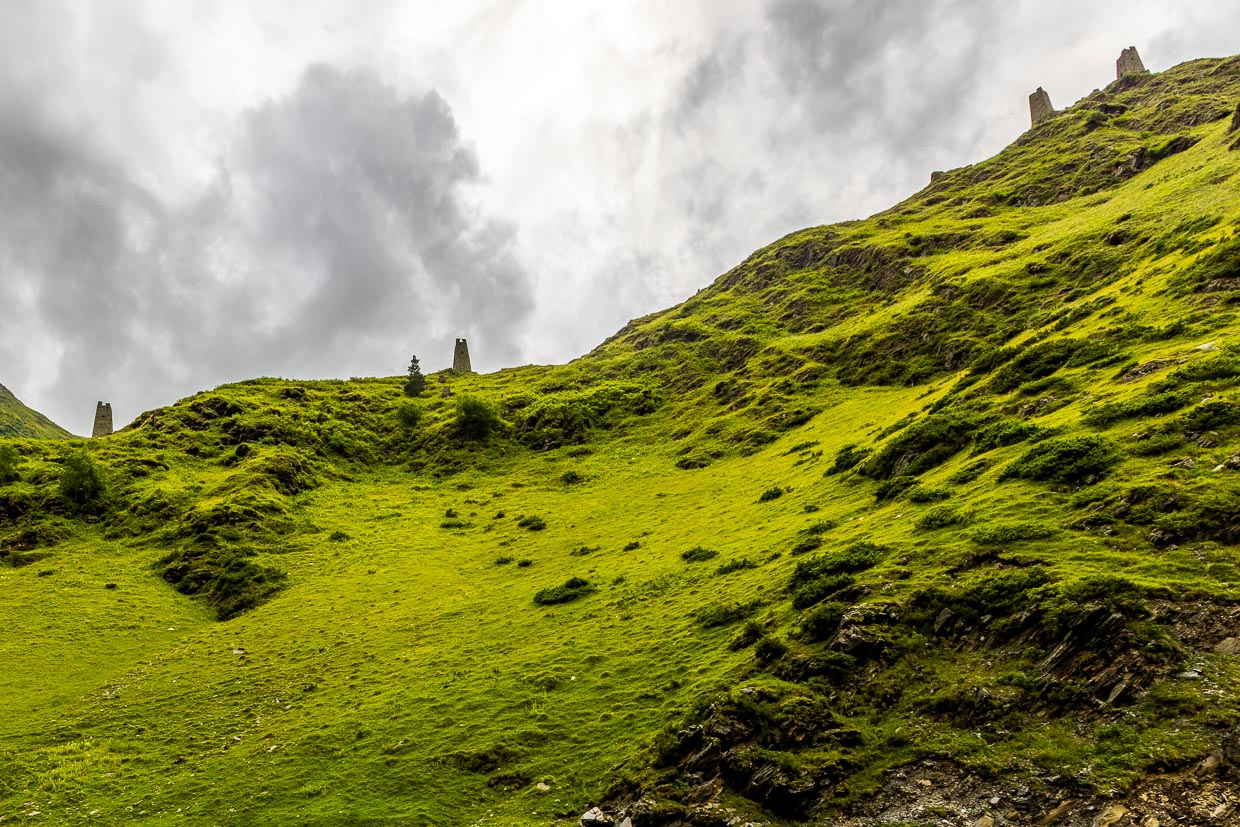
The culture of the Tusk people is characterized by pre-Christian traditions
In the remote region of Georgia, the ethnic group of the Tushes is still entrenched in a faith in which pagan ideas play a major role alongside Christian rituals. For example, most Tusks are firmly convinced that all products that come from pigs bring bad luck in the mountains. Even a hitchhiker with leather shoes or a salami in his backpack can cause a car accident. However, in the Georgian lowlands, where the Tusks spend most of the year, they themselves regularly consume pork
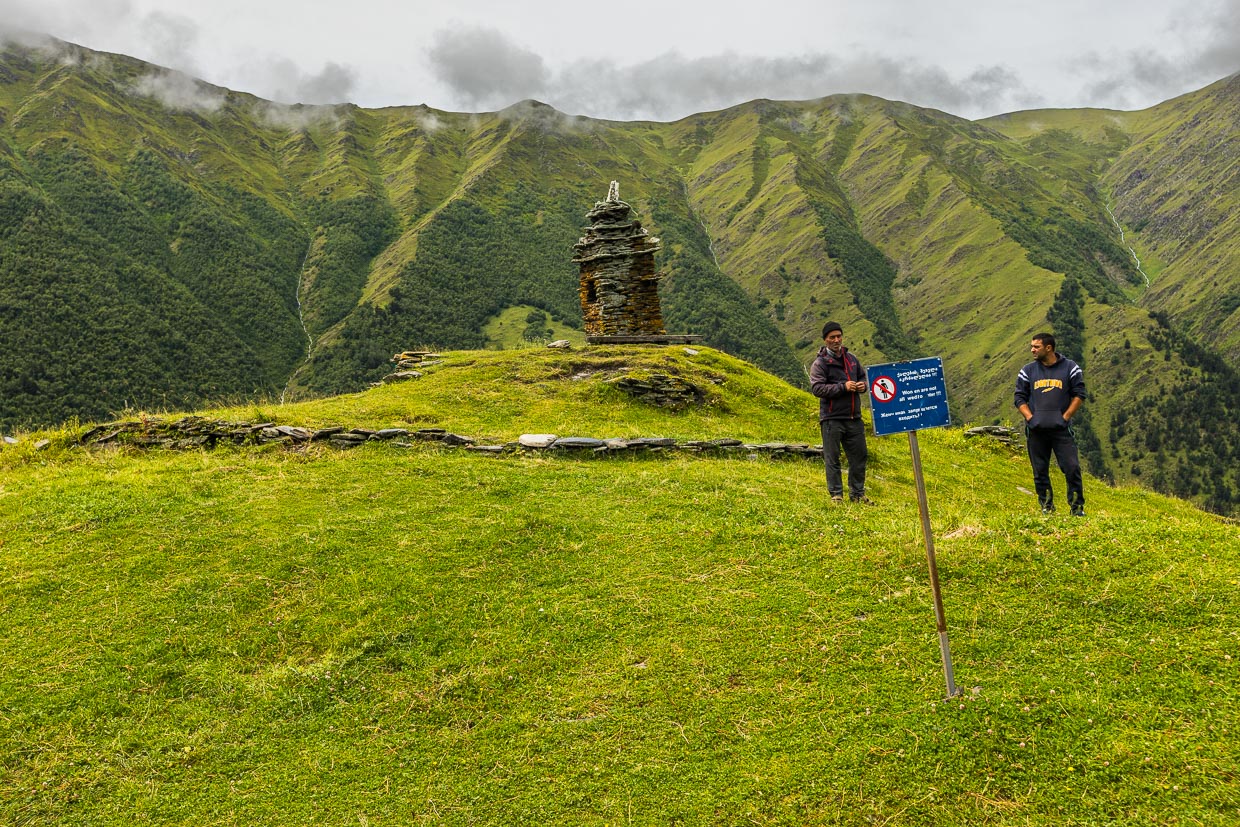
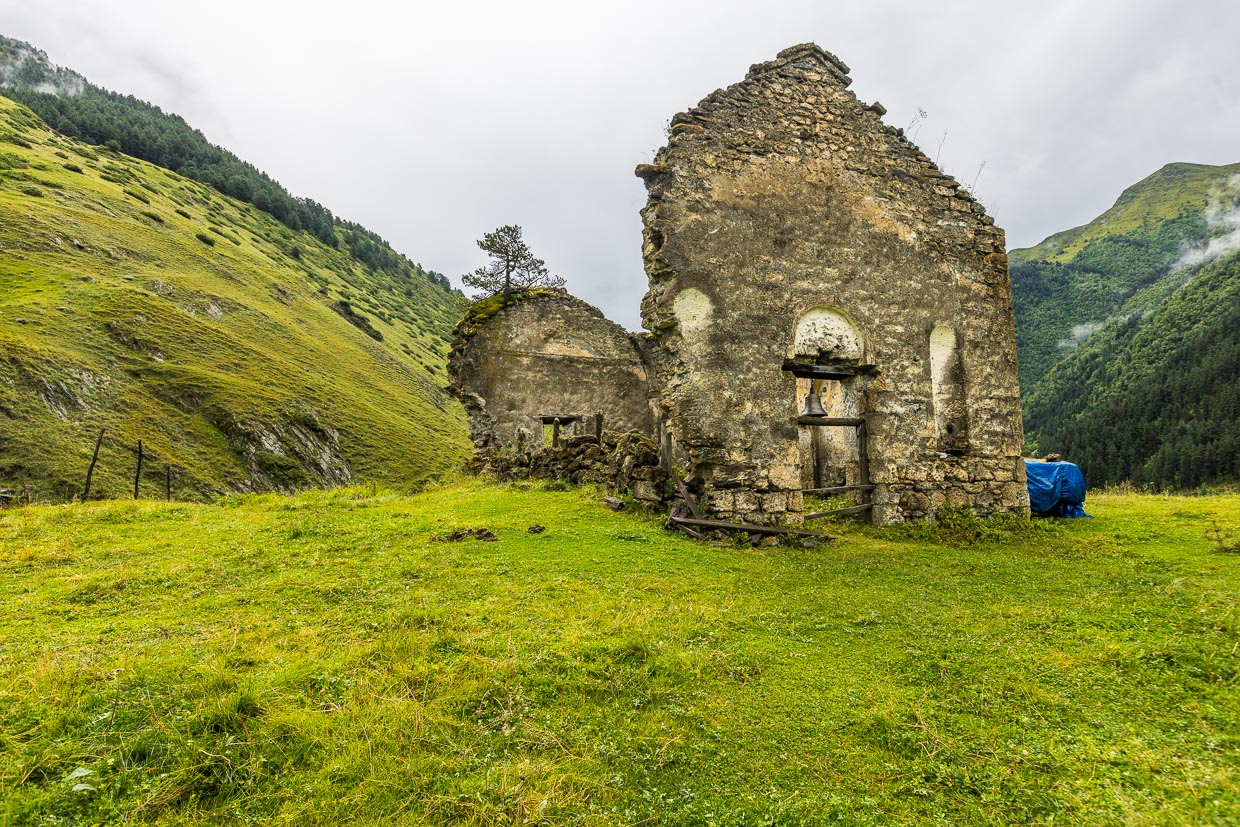
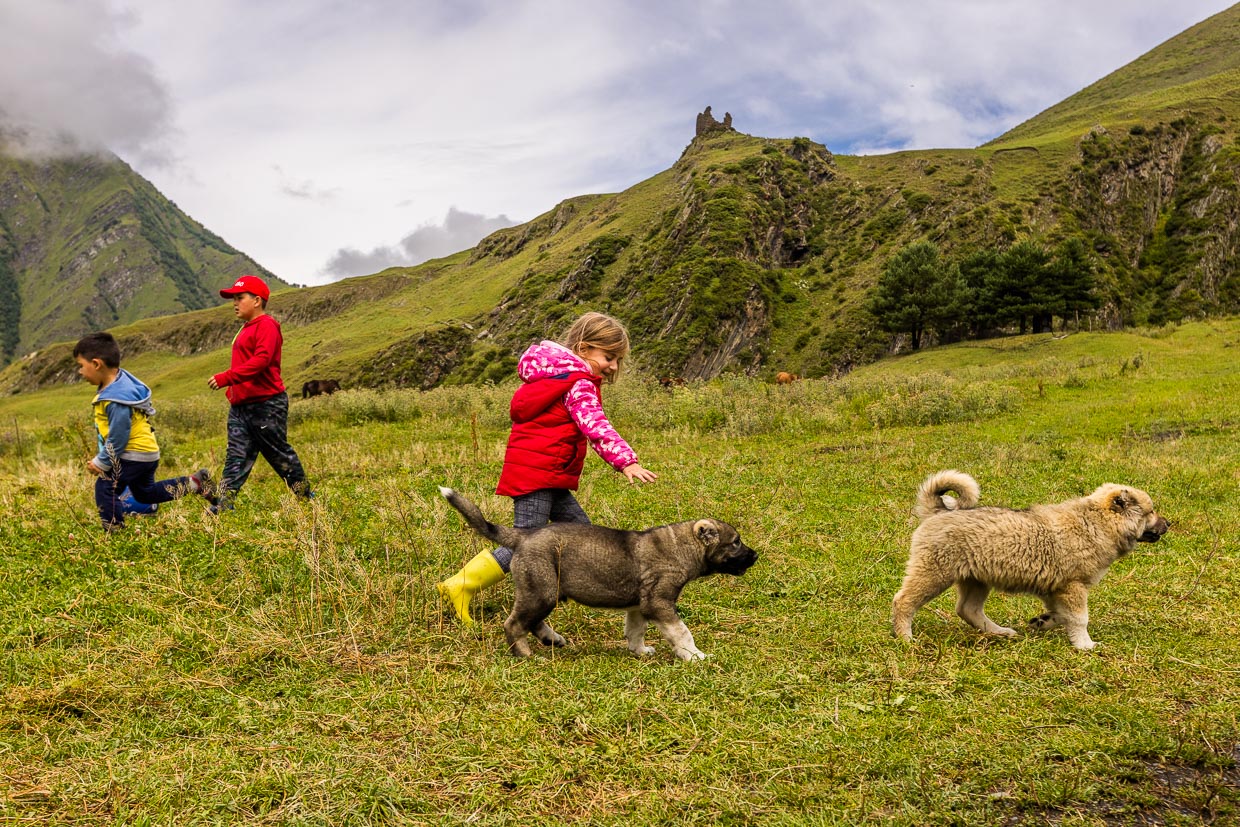
The Caucasian chalk circle
Near Dartlo, where horses were grazing a moment ago, our guide Giorgi shows us a stone circle that inevitably reminds me of Bertholt Brecht’s drama of the Caucasian Chalk Circle. Here in Dartlo, the twelve village elders gathered when necessary to judge crimes such as murder, theft, or treason. In the center of the circle, the accuser and the accused knelt on two stones. Under another stone, both had to take off their shaved mustaches as a sign of the oath. A man’s mustache symbolizes his conscience. The highest punishment was banishment from the village community.
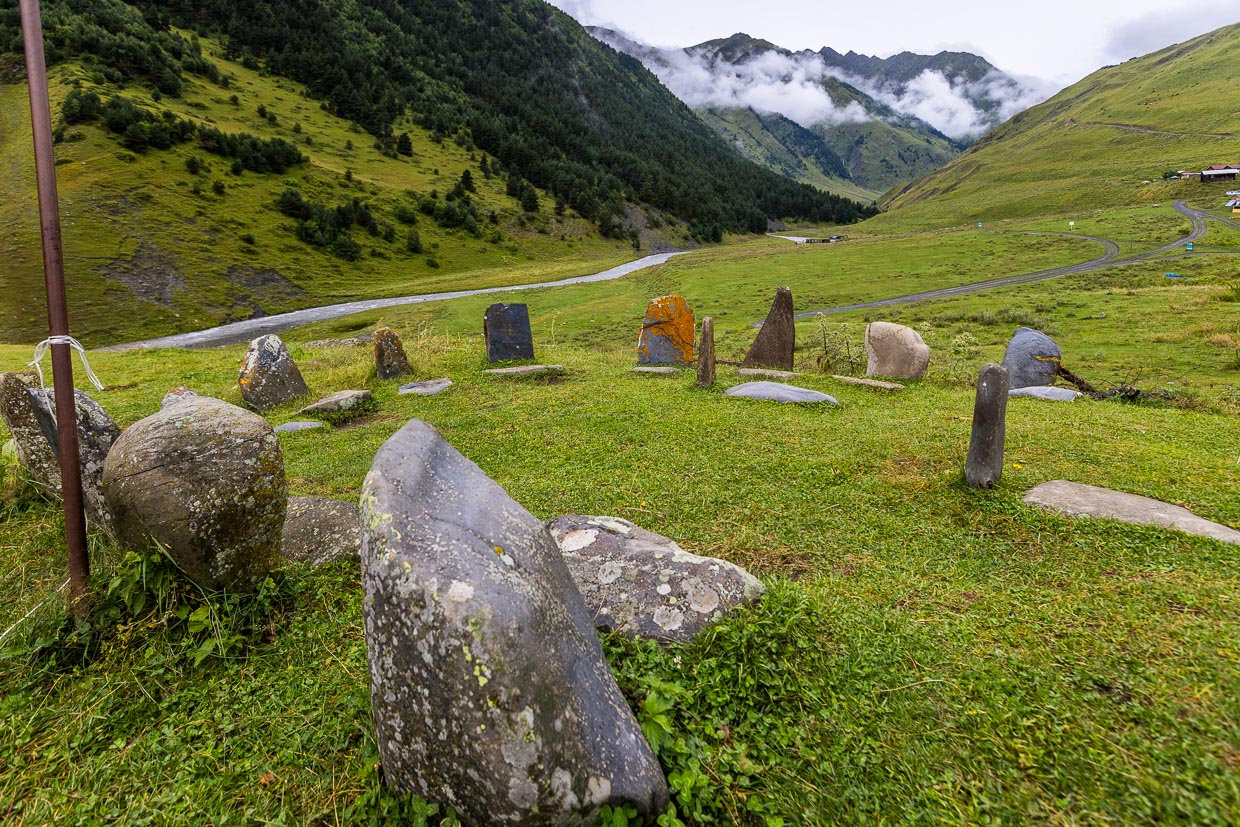
Dogs, sheep, wolves
Tusheti is known for its high-quality sheep products (milk, cheese, wool). The flocks of sheep are tended by shepherds, led by goats and guarded by dogs. Even before you see a flock of sheep, you can hear the barking of sheepdogs. For hikers then increased caution is required, because the dogs take their task very seriously. Running away at this moment is not necessary and rather clumsy. If the flock of sheep is still in front of you, it is better to wait and have a picnic. Because a flock of sheep is always on the move and sooner or later will clear the way.
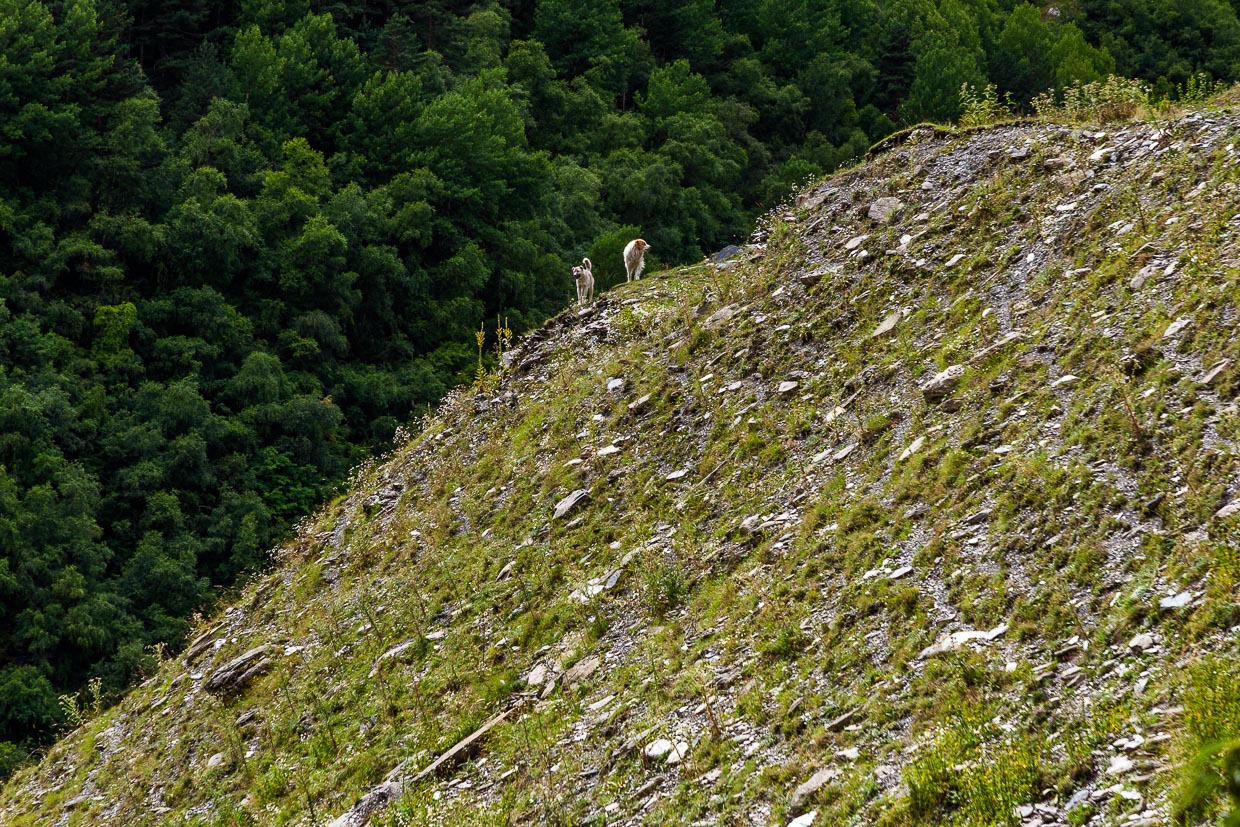

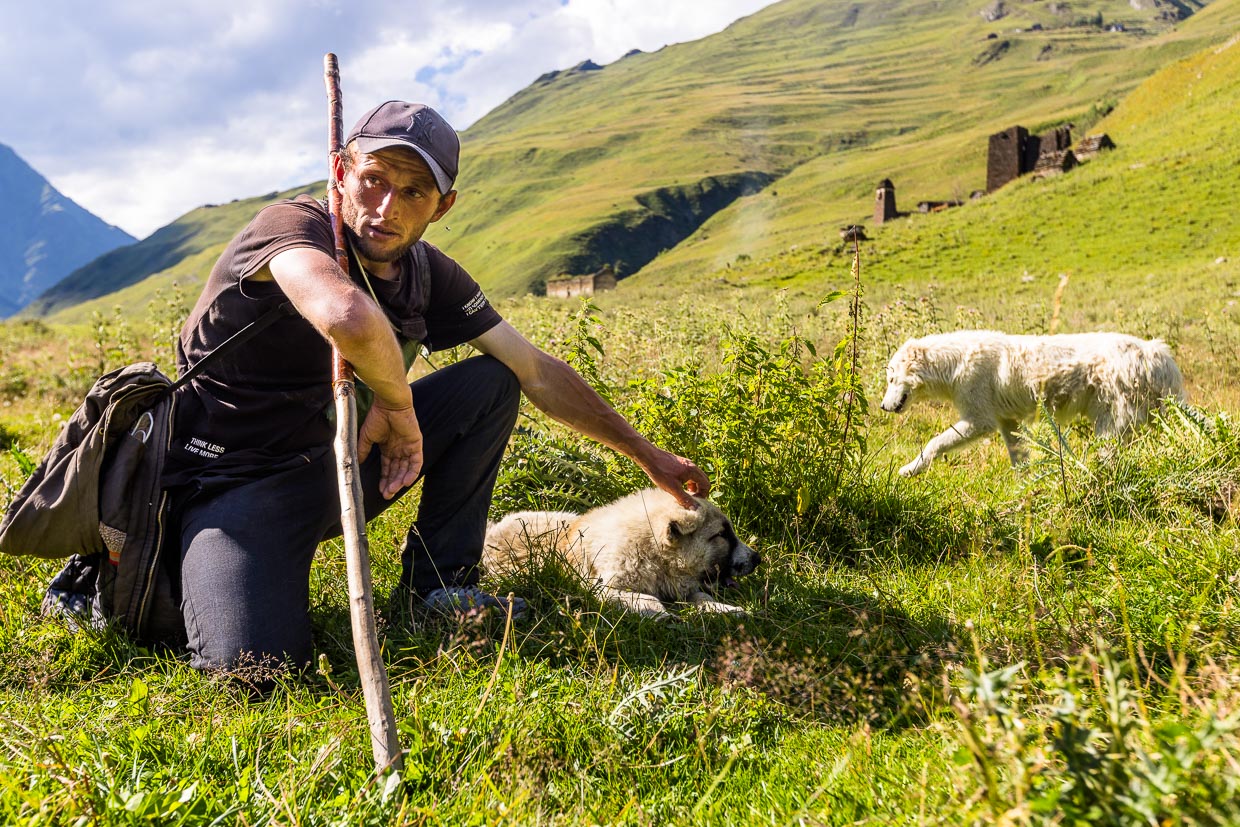
Pack horses and bridges in rough terrain
The higher and steeper a mountain range is, the narrower the trails become. Heavy loads can only be transported over trails with sure-footed animals such as horses, mules and donkeys. Tents, personal luggage, provisions and kitchen utensils for our hiking group of four were transported by six pack horses on the stages over 2,000 meters in altitude. They were loaded and led by experienced packhorses. This is the name given to people who transport loads over mountains on the backs of packhorses.
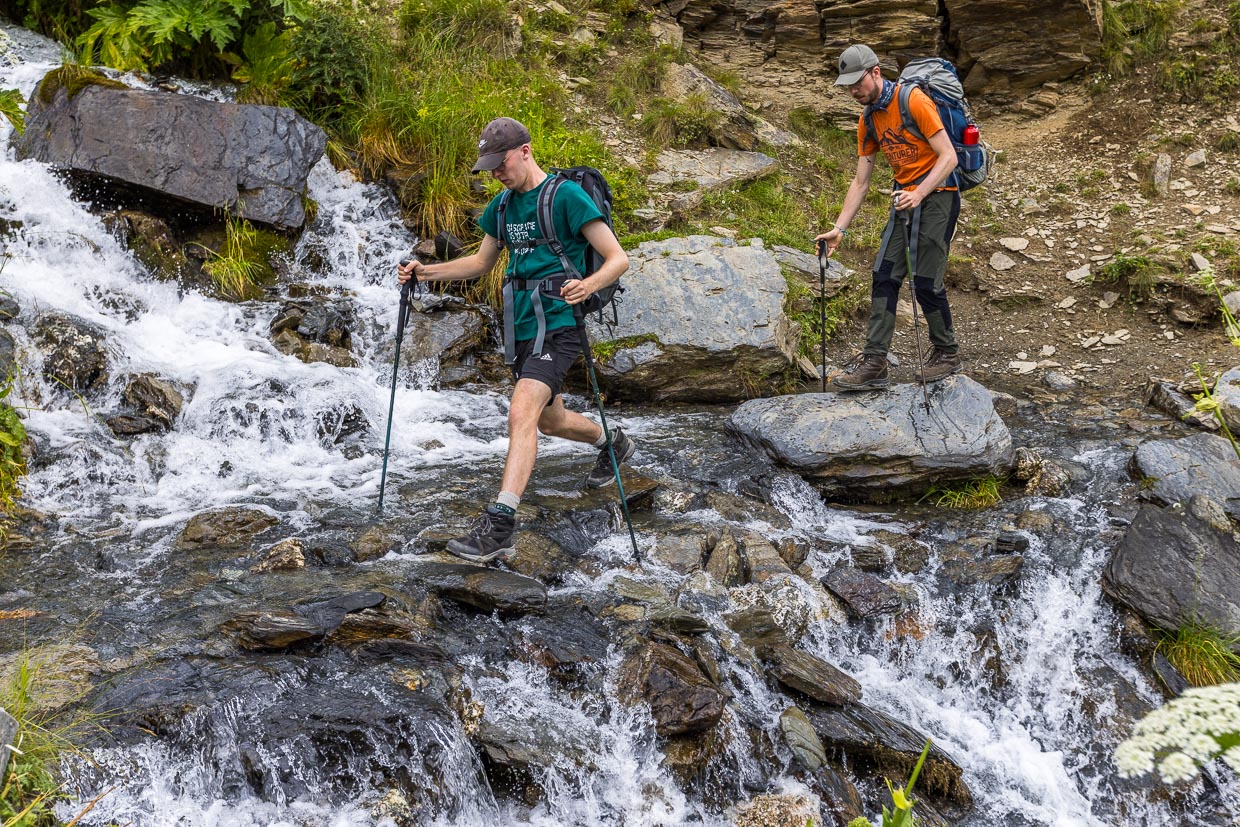
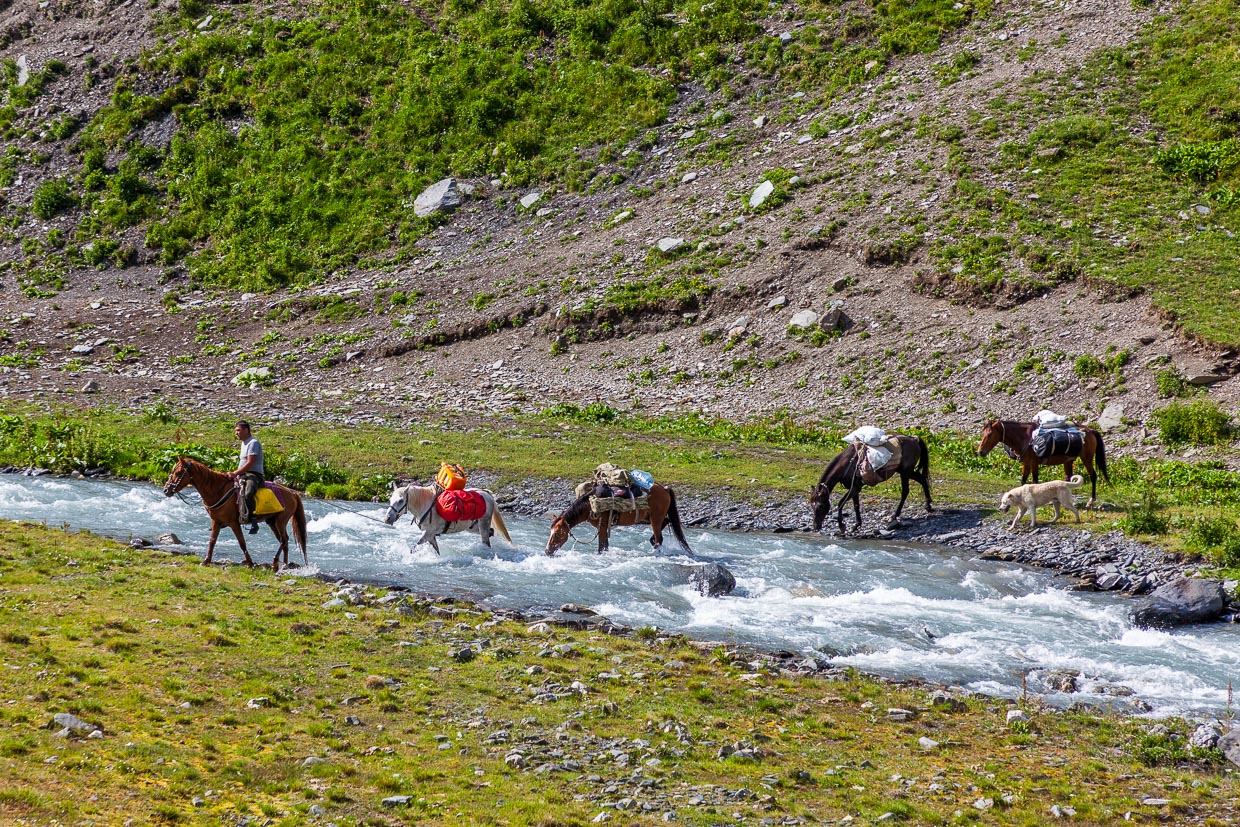
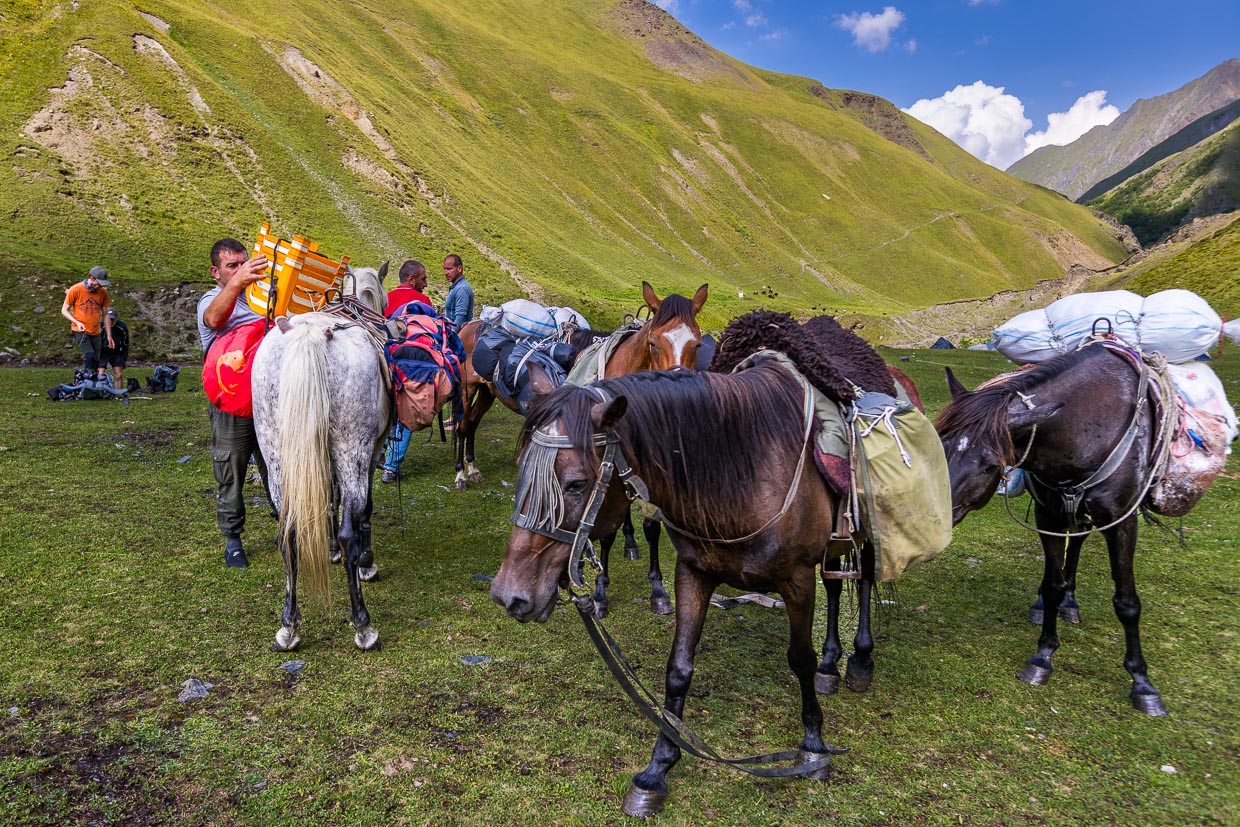
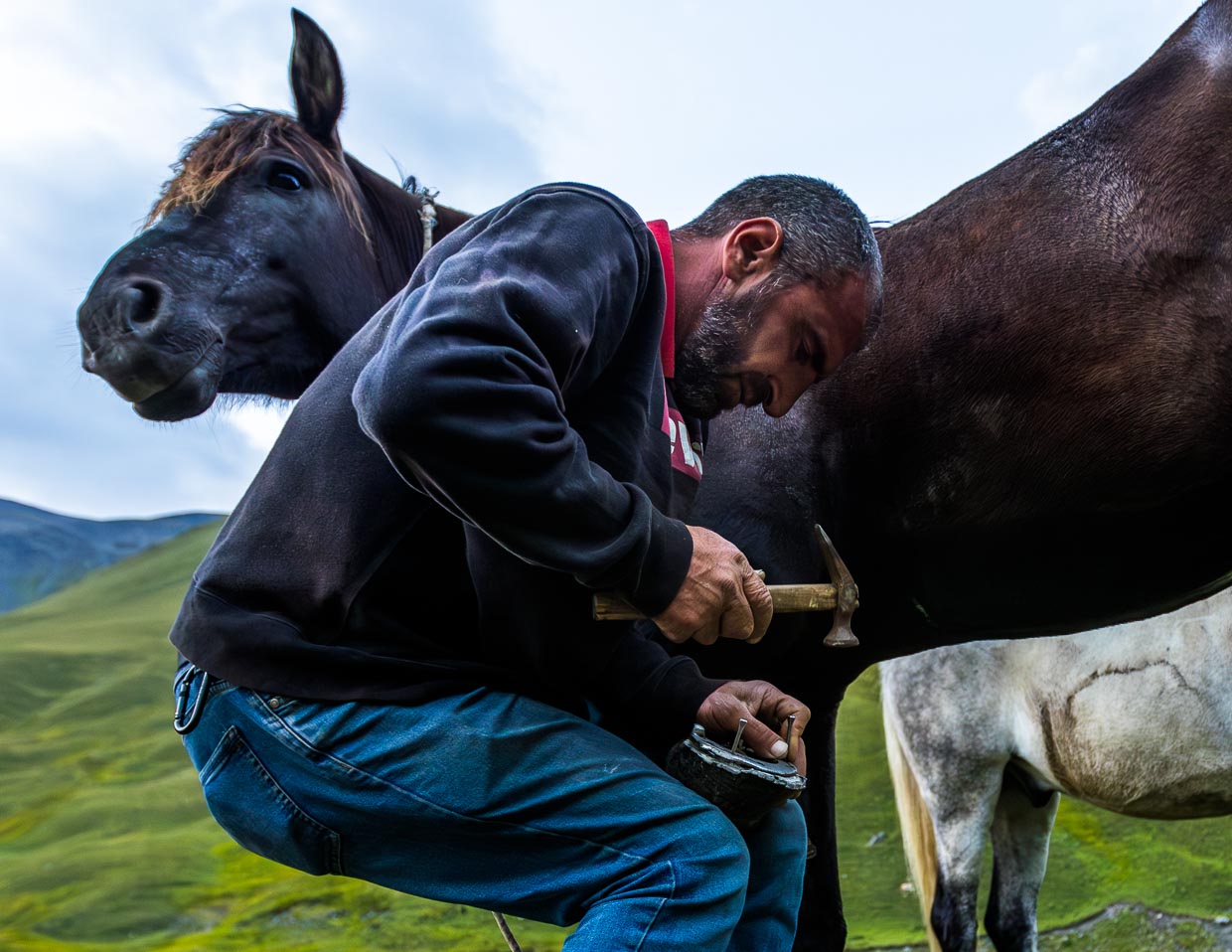
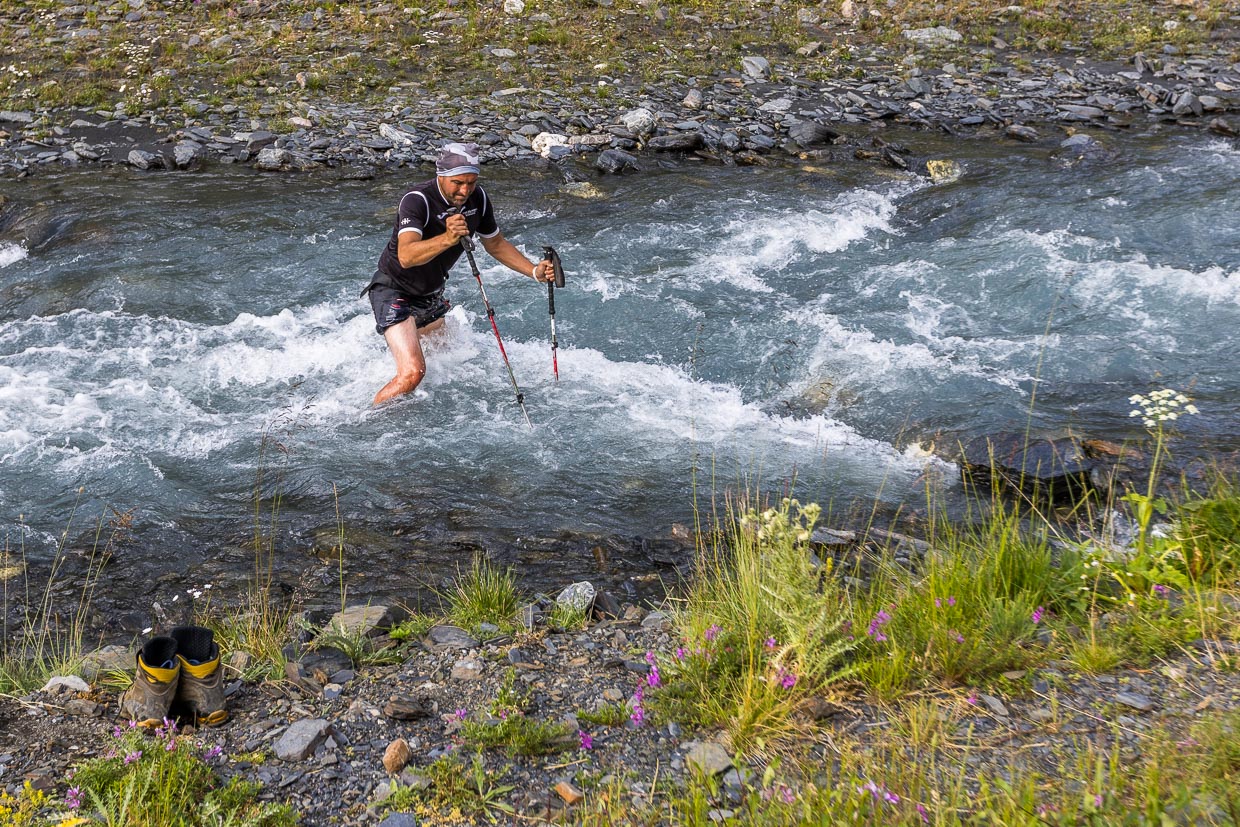
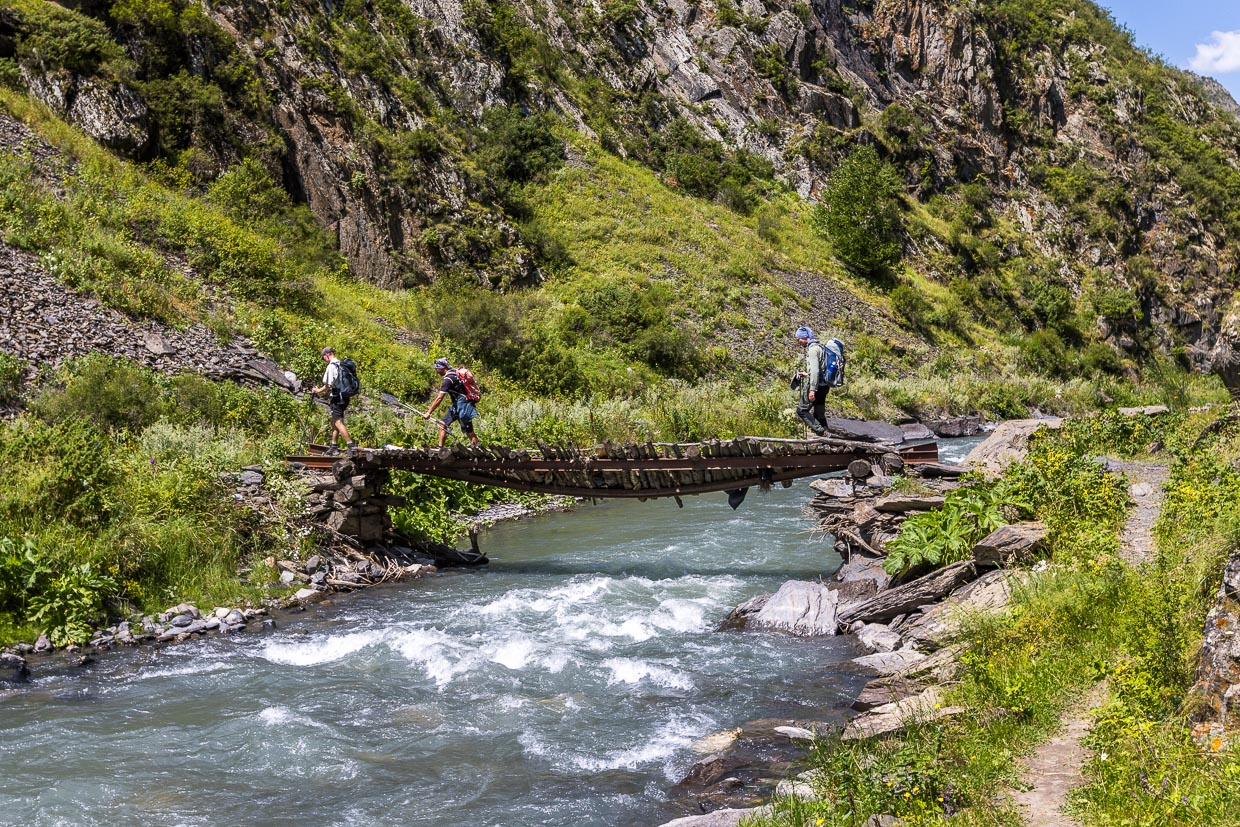
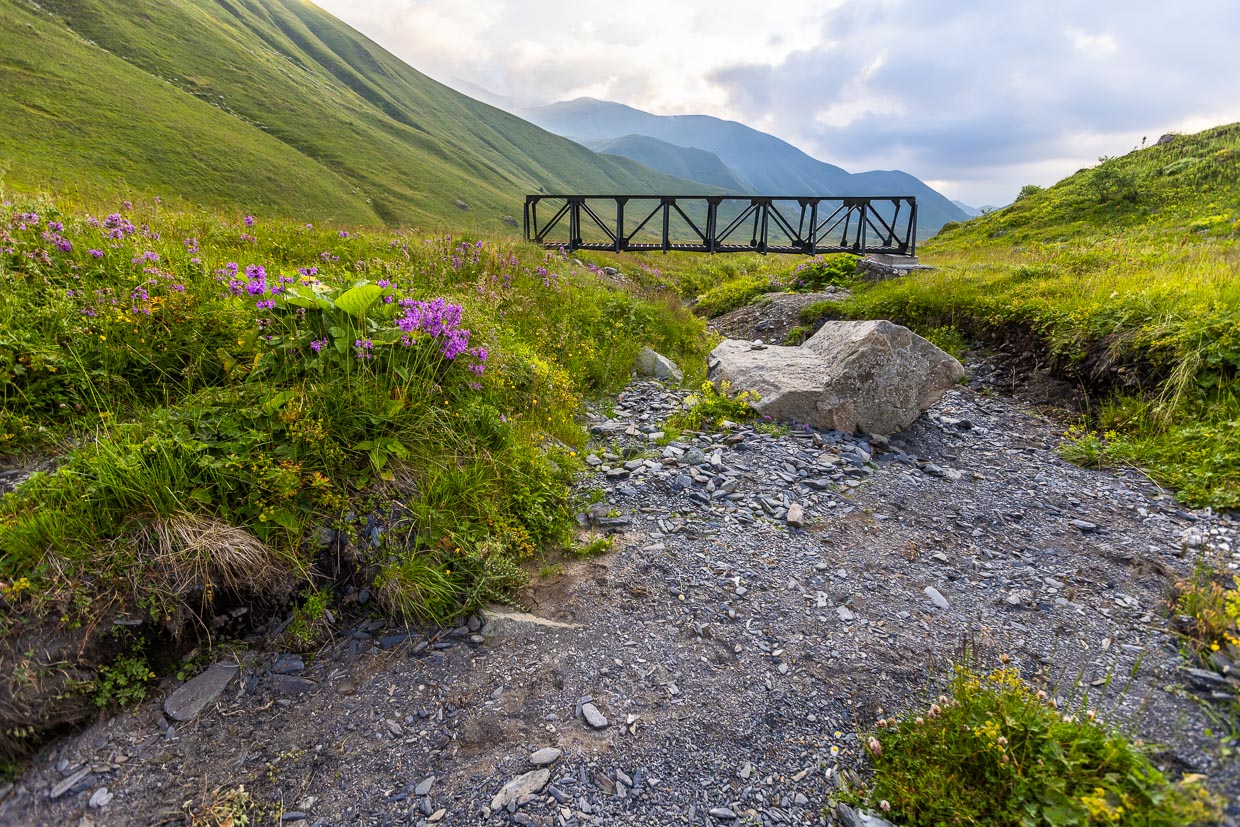
So close to the sky
The next highlights of the hike have to do with steep climbs. The first one leads us over the Atsunta Pass, which connects the Georgian provinces of Tusheti and Kevsuretia. On the sweaty serpentine path over scree fields we meet some mountain bikers. Around noon we can enjoy the view in the cold at an altitude of 3,403 meters.

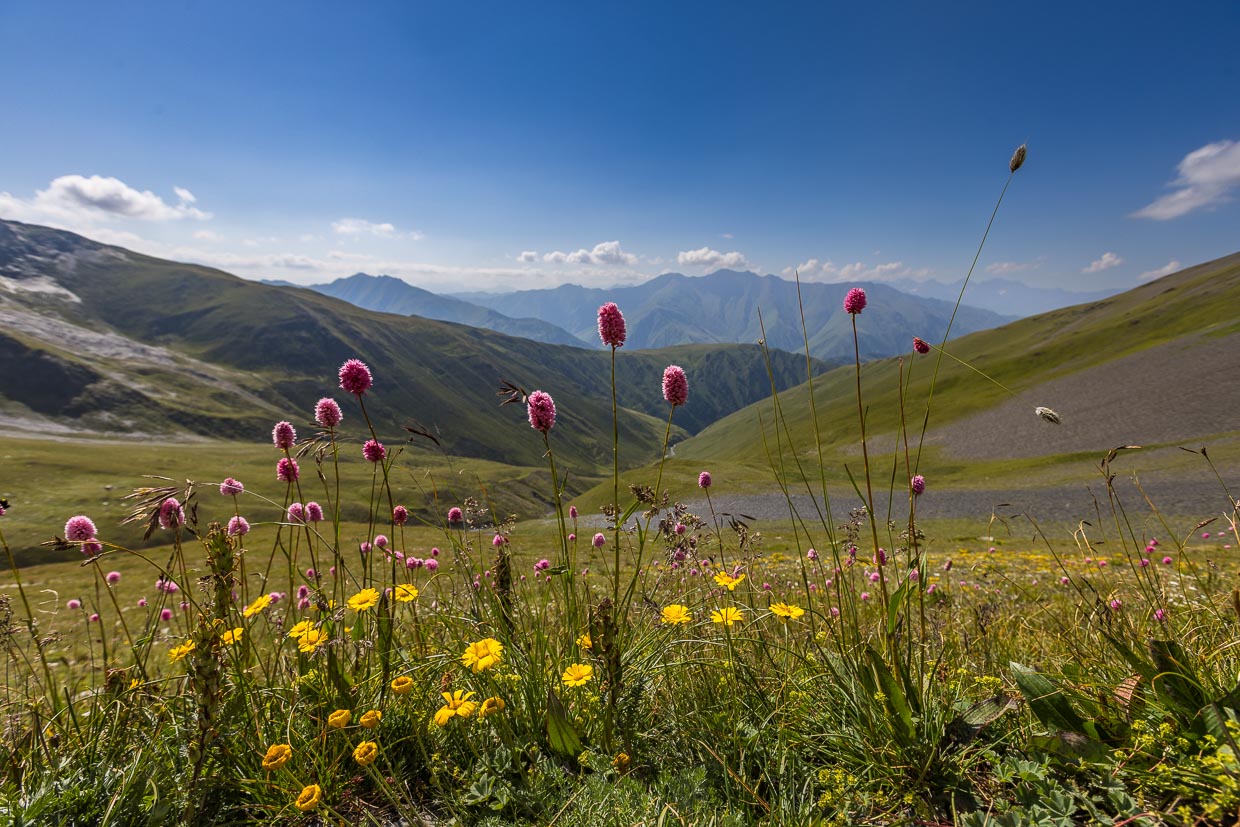
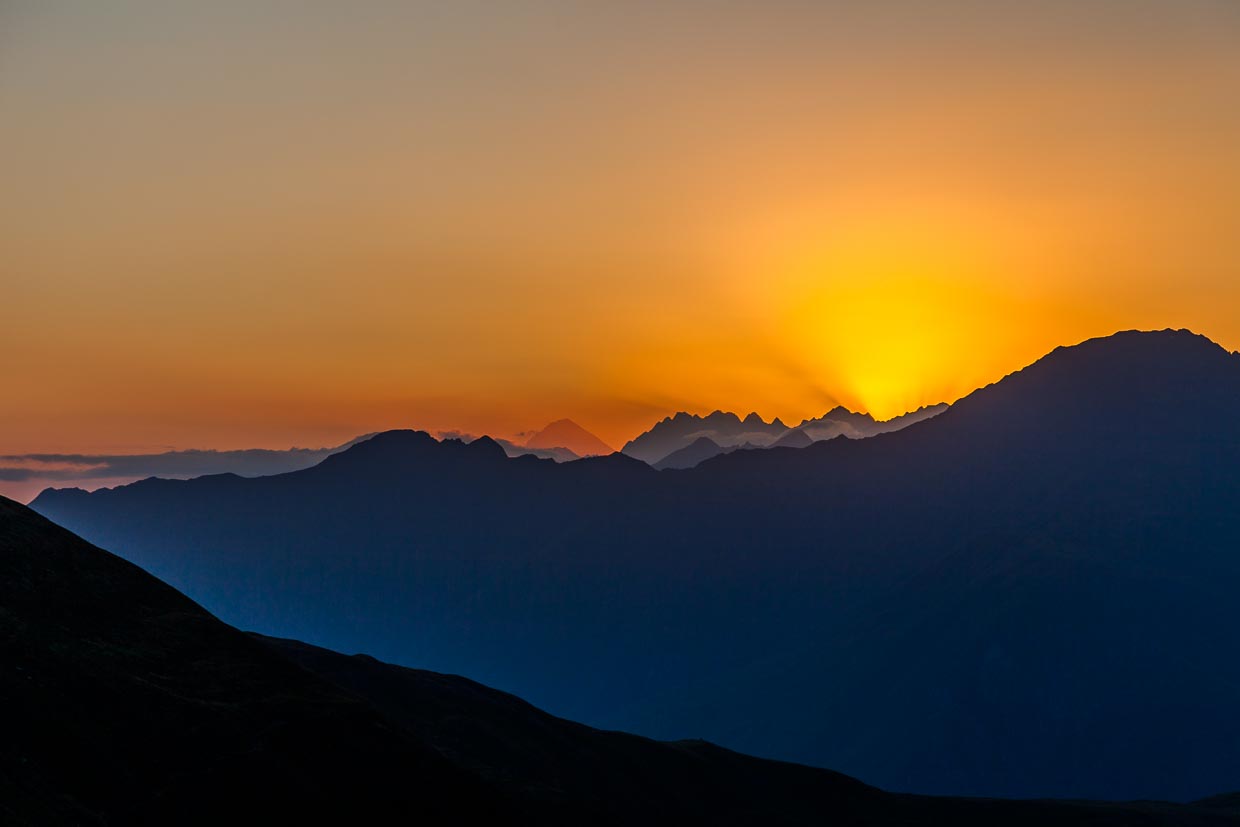
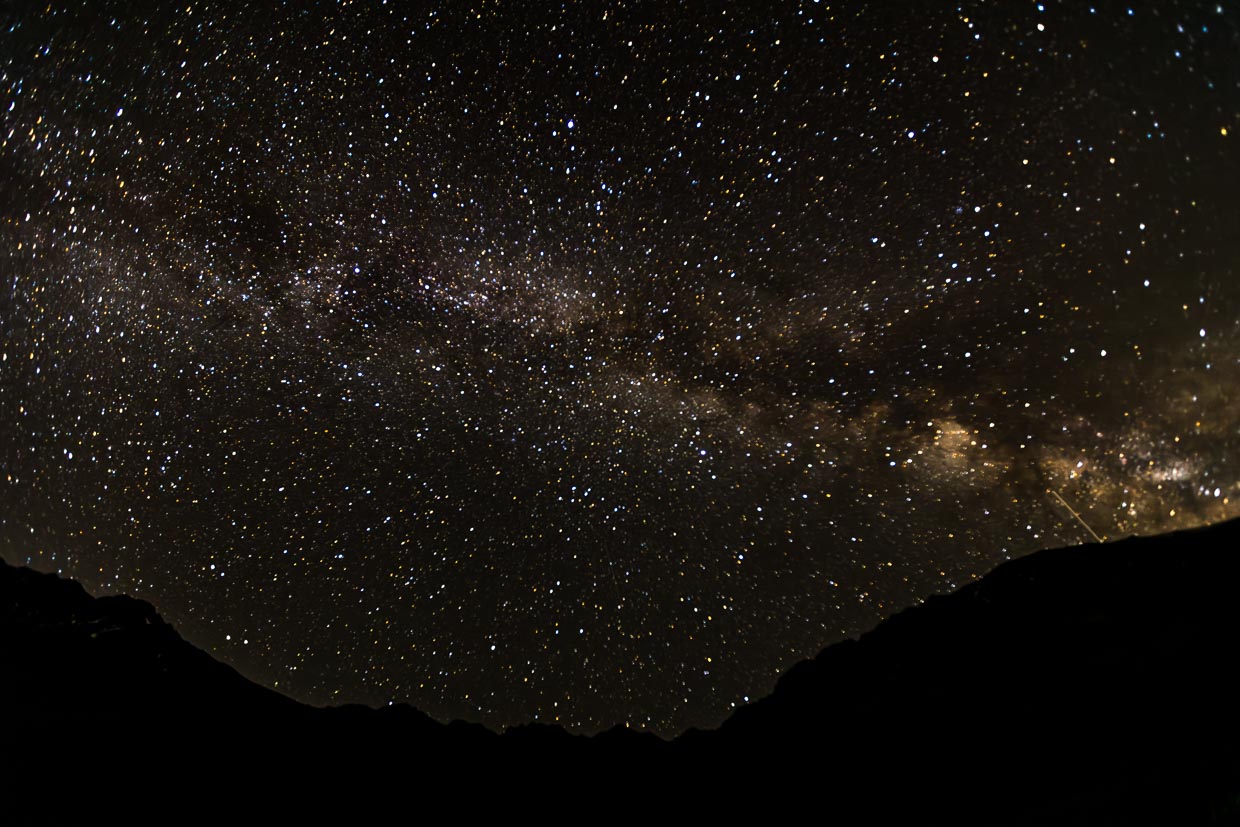
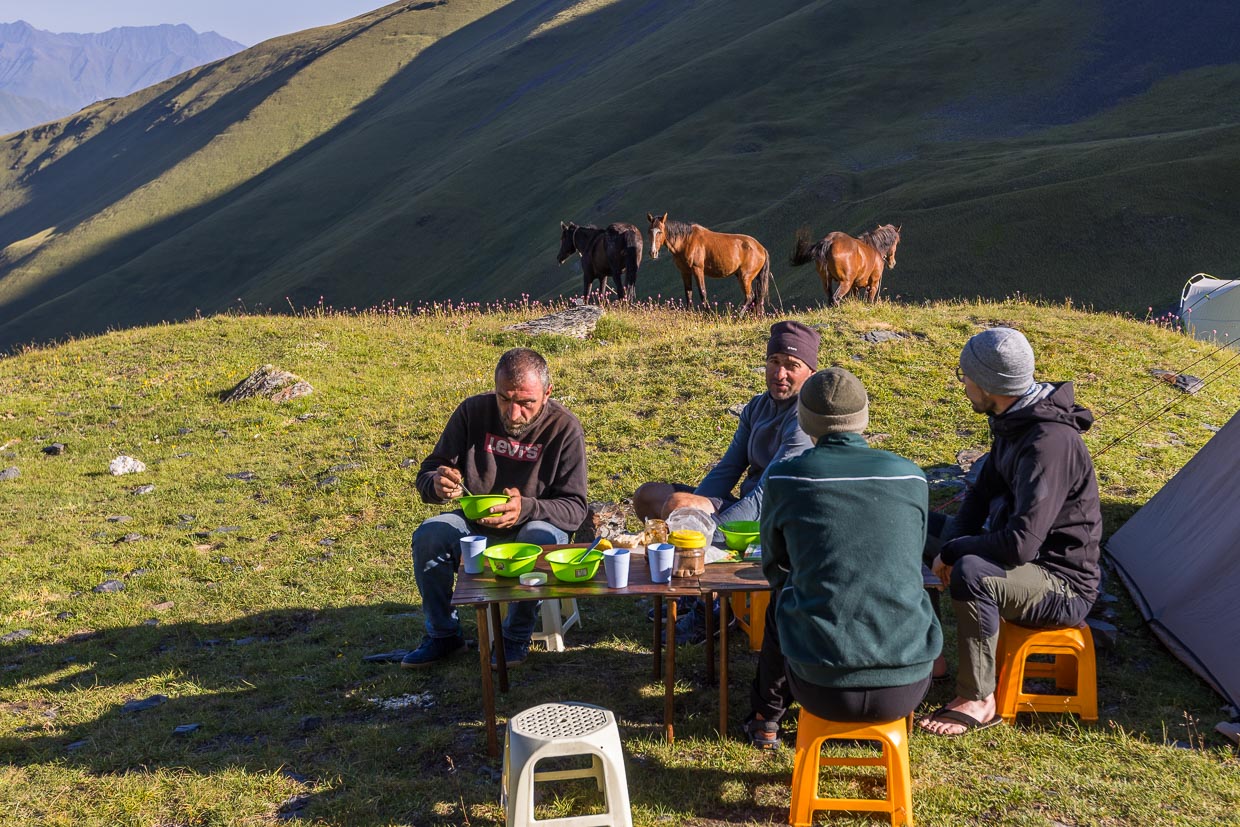
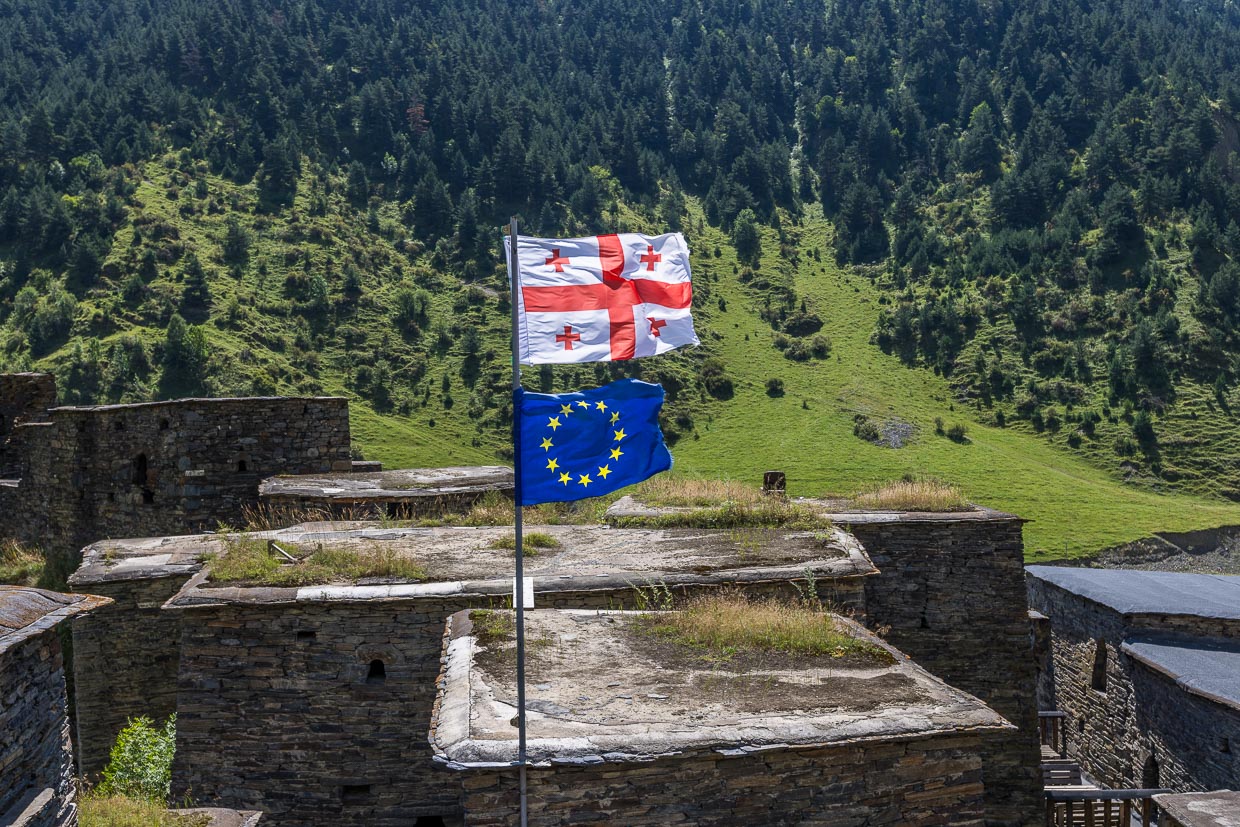
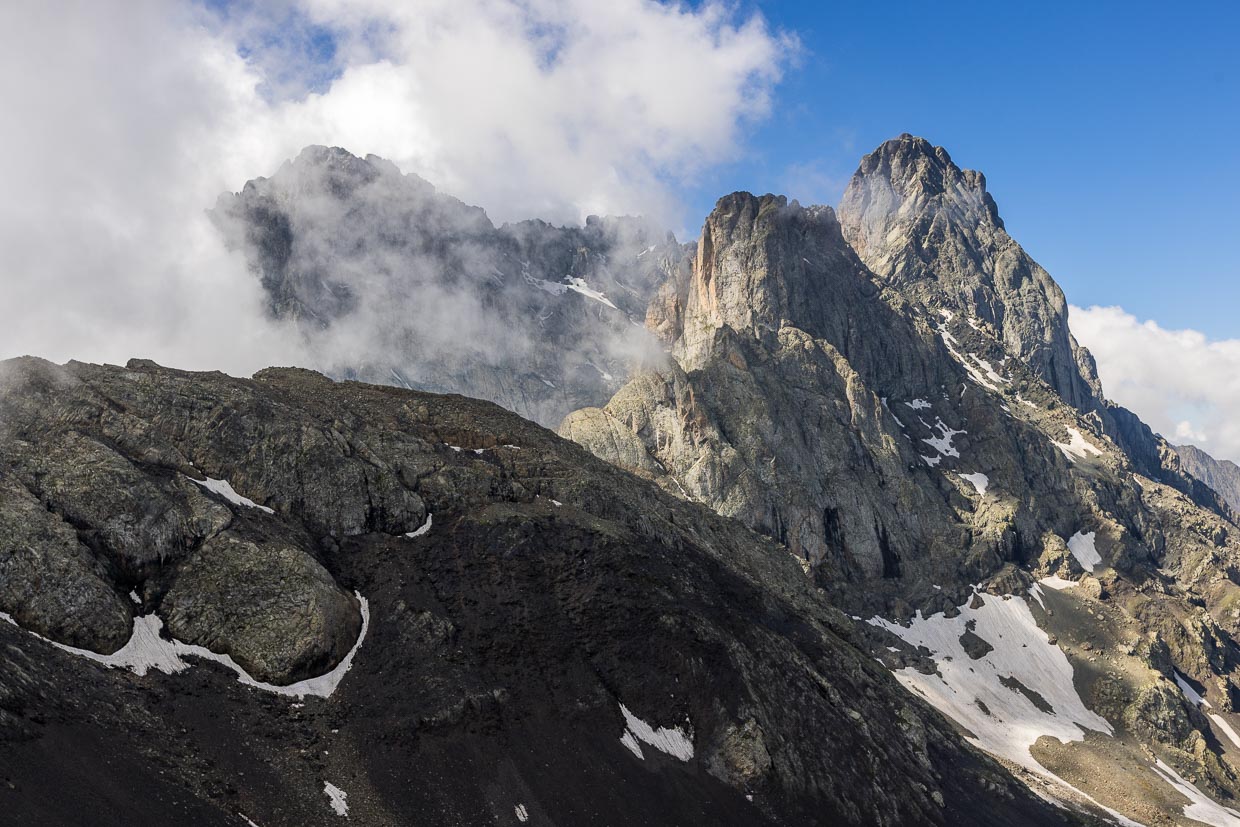
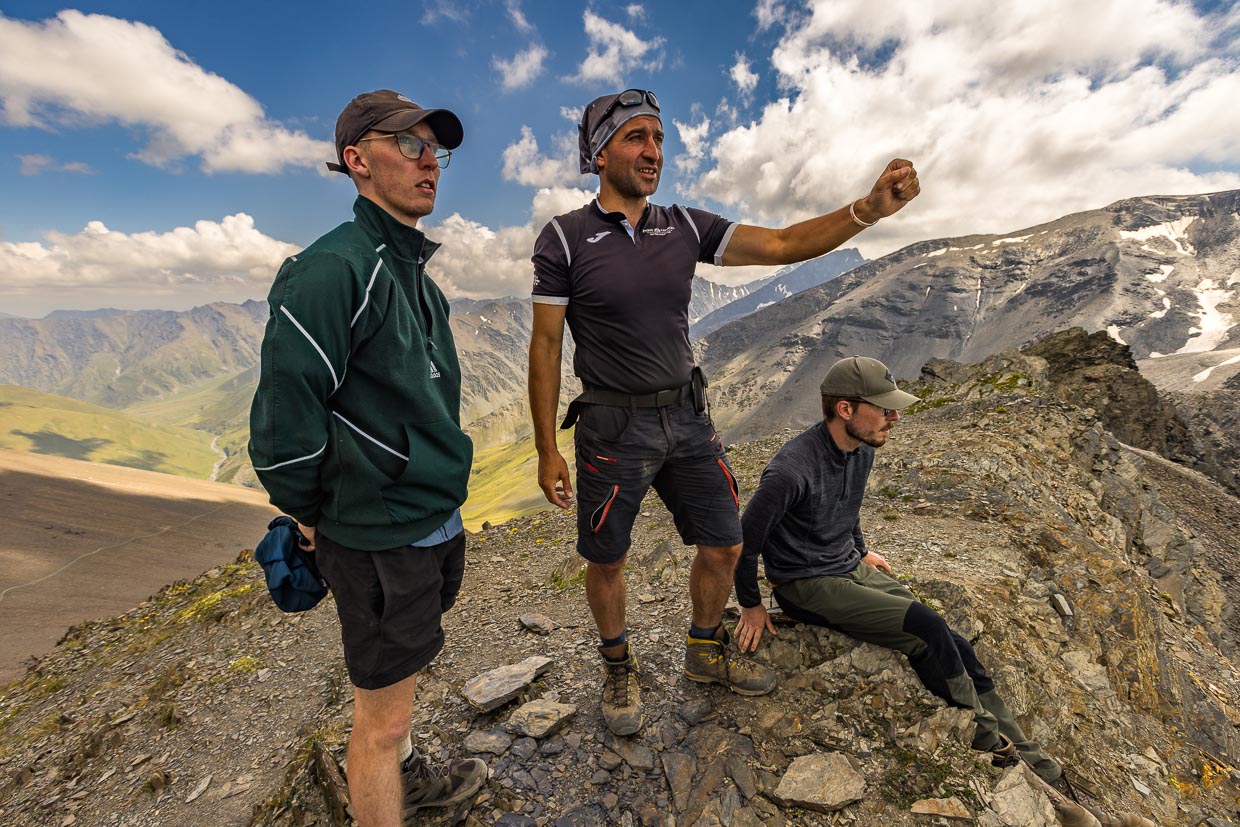
For two weeks we entrusted ourselves to Giorgi, who infected us with enthusiasm for his home country from the first minute. He is a trained tour guide and co-owner of the Georgian travel agency Enjoy Georgia. Contrary to what the name suggests, many customers from German-speaking countries book here. The staff is flexible and communication is uncomplicated. Since we did not have to take care of luggage transport, catering and itinerary ourselves, we could fully engage in the interesting information of the hiking guide.

